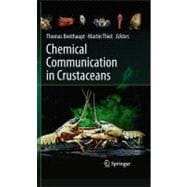
What is included with this book?
| Introductory Section | |
| Chemical Communication in Crustaceans: Research Challenges for the Twenty-First Century | p. 3 |
| Pheromones and Behavior | p. 23 |
| General Overview of Signal Characteristics and Reception | |
| Crustaceans as Powerful Models in Aquatic Chemical Ecology | p. 41 |
| Waterborne Chemical Communication: Stimulus Dispersal Dynamics and Orientation Strategies in Crustaceans | p. 63 |
| Hydrodynamics of Sniffing by Crustaceans | p. 85 |
| Chemosensory Sensilla in Crustaceans | p. 103 |
| Neuronal Processing of Chemical Information in Crustaceans | p. 123 |
| The Neural and Behavioral Basis of Chemical Communication in Terrestrial Crustaceans | p. 149 |
| Chemical Communication and Behavior | |
| Chemical Communication Between Copepods: Finding the Mate in a Fluid Environment | p. 177 |
| Chemical Communication in Peracarid Crustaceans | p. 199 |
| Mantis Shrimp: Olfactory Apparatus and Chemosensory Behavior | p. 219 |
| Chemical Communication in Lobsters | p. 239 |
| Chemical Communication in Crayfish | p. 257 |
| Chemical Communication in Decapod Shrimps: The Influence of Mating and Social Systems on the Relative Importance of Olfactory and Contact Pheromones | p. 277 |
| Chemical Ecology and Social Behavior of Anomura | p. 297 |
| Deception in Visual and Chemical Communication in Crustaceans | p. 313 |
| Chemical Communication in a Multimodal Context | p. 335 |
| Chemical Cuses and Reducing the Risk of Predation | p. 355 |
| Towards Identification of Chemical Signals | |
| Identification of Crustacean Sex Pheromones | p. 373 |
| Approaches to a Molecular Identification of Sex Pheromones in Blue Crabs | p. 393 |
| The Crustacean Endocrine System and Pleiotropic Chemical Messengers | p. 413 |
| Toward a Characterization of the Chemical Cue to Barnacle Gregariousness | p. 431 |
| Contact Chemoreception and Its Role in Zooplankton Mate Recognition | p. 451 |
| A Review of Research in Fish Pheromones | p. 467 |
| Applied Aspects | |
| Chemical Communication and Aquaculture of Decapod Crustaceans: Needs, Problems, and Possible Solutions | p. 485 |
| Effects of Pollutants on Olfactory Mediated Behaviors in Fish and Crustaceans | p. 507 |
| Insect Pheromones: Useful Lessons for Crustacean Pheromone Programs? | p. 531 |
| Index | p. 551 |
| Table of Contents provided by Ingram. All Rights Reserved. |
The New copy of this book will include any supplemental materials advertised. Please check the title of the book to determine if it should include any access cards, study guides, lab manuals, CDs, etc.
The Used, Rental and eBook copies of this book are not guaranteed to include any supplemental materials. Typically, only the book itself is included. This is true even if the title states it includes any access cards, study guides, lab manuals, CDs, etc.